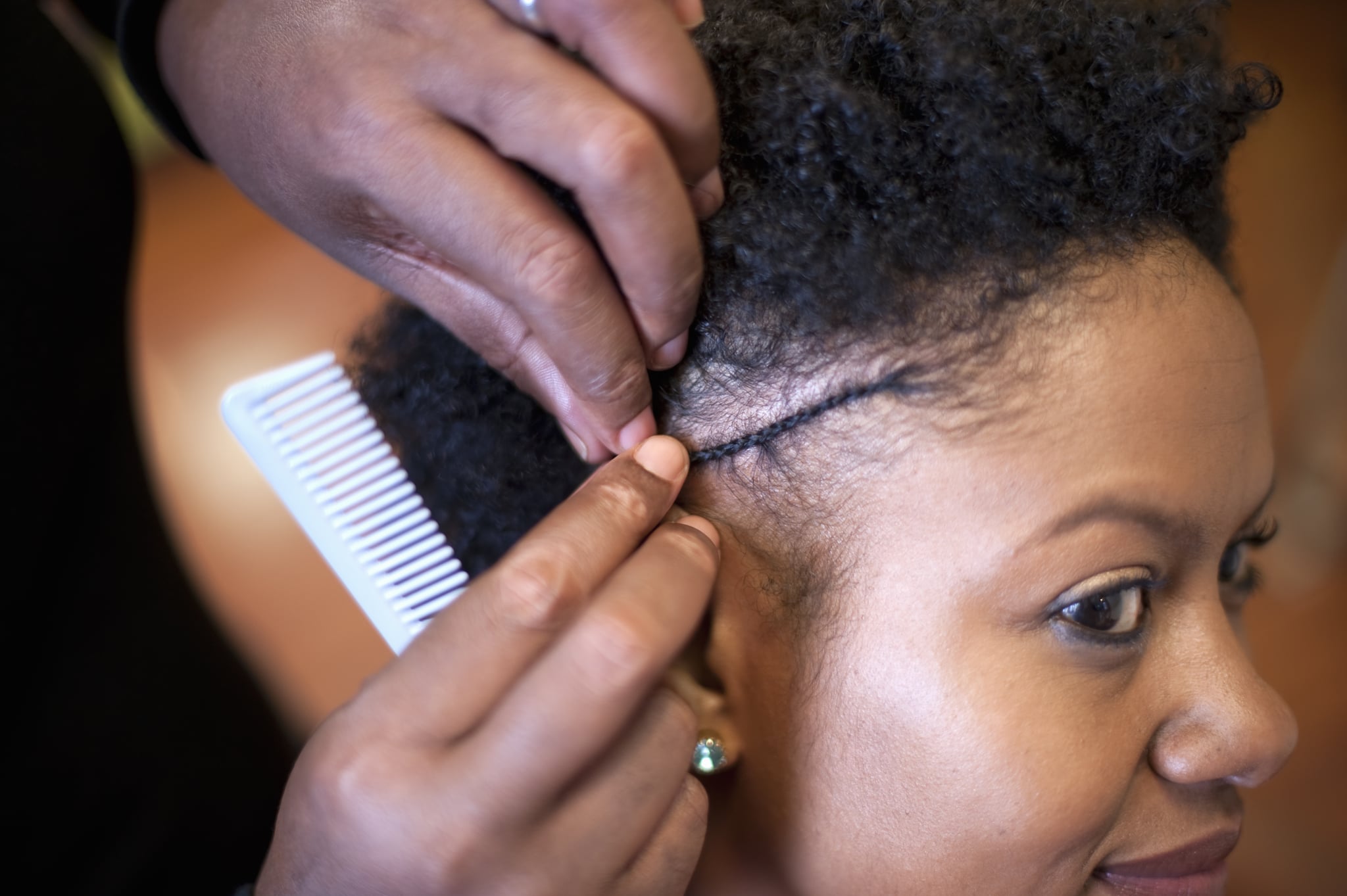
Blow drys [1], ponytails, chemical treatments, braids [2] — when we really stop to think about it, we put our hair through a lot. Popular as these styles and processes are, they can really take a toll on hair and further increase our risk of hair loss [3] or, more specifically, traction alopecia.
Whether you've heard of this common form of hair loss before or not, we spoke to a dermatologist on all things you need to know about traction alopecia, including the causes, signs to look out for, and how you can prevent or treat the condition.
What Causes Traction Alopecia?
Simply put, traction alopecia is a type of hair loss that occurs when too much stress is placed on the hair follicle. "[It's] a gradual form of hair loss that is caused by any type of hairstyle, hair grooming, or styling that pulls on the hair," dermatologist Jeannette Graf, MD [4], told POPSUGAR. "This constant tension caused by repeatedly tightly pulling on the hair creates damage to the root, which can ultimately result in scarring and permanent hair loss."
This type of hair loss is common among Black women who frequently wear their hair in tight styles like braids and weaves, but it definitely isn't limited to just one race. Traction alopecia can also occur as a result of the use of high heat [5], chemical treatments, and too-tight updos, and it's most commonly seen around the hairline. If you frequently do any of the aforementioned things to your hair, it's a good idea to take a break and let your hair breathe in between certain treatments and styles so you don't run the risk of putting more tension on your hair than it can handle.
What Are the Signs of Traction Alopecia?
In most cases, traction alopecia can take years to develop, so it may take some time before you start to notice your hairline getting thinner. You can usually tell that traction alopecia is what you're dealing with if you begin to see small bumps around the areas where your hair is regularly pulled tightly or put through any type of stress. Your hair in these areas may also sparse or thin out.
Is Regrowth From This Type of Hair Loss Possible?
Because not all hair loss is the same, regrowth isn't always guaranteed, but it's possible for your hair to grow back depending on the level of severity.
"If it's addressed early enough, there can be complete regrowth," Dr. Graf said. "All of it depends of course on the extent of damage since, if there is severe damage to the follicle and scarring, which usually results from many years of chronic pulling and traction on the hair, chances are it may not be able to grow back."
Dr. Graf recommends using topical treatments that support regrowth. This includes oral supplements like Foligain Stimulating Supplement For Thinning Hair [6] (£43). Outside of supplements, you can also add antithinning shampoos, conditioners, and scalp treatments to your routine. Head over here to check out our list of hairstylist-recommended products for thinning hair.
How Can I Prevent Traction Alopecia?
The easy answer here is to either avoid wearing too tight of hairstyles and using stressful treatments altogether, or provide your hair with the utmost care in between them. That means giving your hair a breather of at least two to three weeks and nurturing it with a moisture-filled routine. If you choose to continue wearing braids, weaves, updos, or what have you, you could also consider adjusting how tightly you install them.